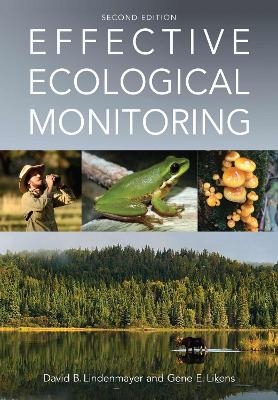
Effective Ecological Monitoring
CSIRO Publishing (Verlag)
978-1-4863-0892-7 (ISBN)
Long-term monitoring programs are fundamental to understanding the natural environment and managing major environmental problems. Yet they are often done very poorly and ineffectively. This second edition of the highly acclaimed Effective Ecological Monitoring describes what makes monitoring programs successful and how to ensure that long-term monitoring studies persist. The book has been fully revised and updated but remains concise, illustrating key aspects of effective monitoring with case studies and examples. It includes new sections comparing surveillance-based and question-based monitoring, analysing environmental observation networks, and provides examples of adaptive monitoring.
Based on the authors’ 80 years of collective experience in running long-term research and monitoring programs, Effective Ecological Monitoring is a valuable resource for the natural resource management, ecological and environmental science and policy communities.
David Lindenmayer is a Research Professor at The Australian National University who has specialised in established large-scale, long-term ecological monitoring and research programs that have extended for more than 35 years in many different parts of south-eastern Australia. Professor Gene Likens is one of the world’s most highly decorated scientists and widely recognised for his pioneering and ground-breaking work on acid rain in north-eastern USA.
Acknowledgments
Preface to Second Edition
1: Introduction
Some of the ecological values and uses of long-term datasets
Poor record of long-term ecological monitoring
Why we wrote this book
2: Why monitoring fails
Characteristics of ineffective monitoring programs
Other factors contributing to ineffective monitoring programs
3: What makes long-term monitoring effective?
Characteristics of effective monitoring programs
Little things matter a lot! Some 'tricks of the trade'
The adaptive monitoring framework
4: The problematic, the effective and the ugly – some case studies
The problematic
The effective
Need to wait and see
The ugly
5: The upshot – our general conclusions
Changes in culture needed to facilitate monitoring
Good things that can come from non-question based monitoring
The role of citizen science in long-term monitoring
The challenge of intellectual property and data sharing
The challenges in effective monitoring of rare, threatened and endangered species
The major challenge of keeping monitoring and long-term studies going
The big issue of integrating different kinds of monitoring
Approaches to integrate data from different kinds of monitoring
Index
| Erscheinungsdatum | 23.07.2018 |
|---|---|
| Verlagsort | Melbourne |
| Sprache | englisch |
| Maße | 170 x 245 mm |
| Gewicht | 418 g |
| Themenwelt | Naturwissenschaften ► Biologie ► Ökologie / Naturschutz |
| Naturwissenschaften ► Biologie ► Zoologie | |
| ISBN-10 | 1-4863-0892-9 / 1486308929 |
| ISBN-13 | 978-1-4863-0892-7 / 9781486308927 |
| Zustand | Neuware |
| Haben Sie eine Frage zum Produkt? |
aus dem Bereich


